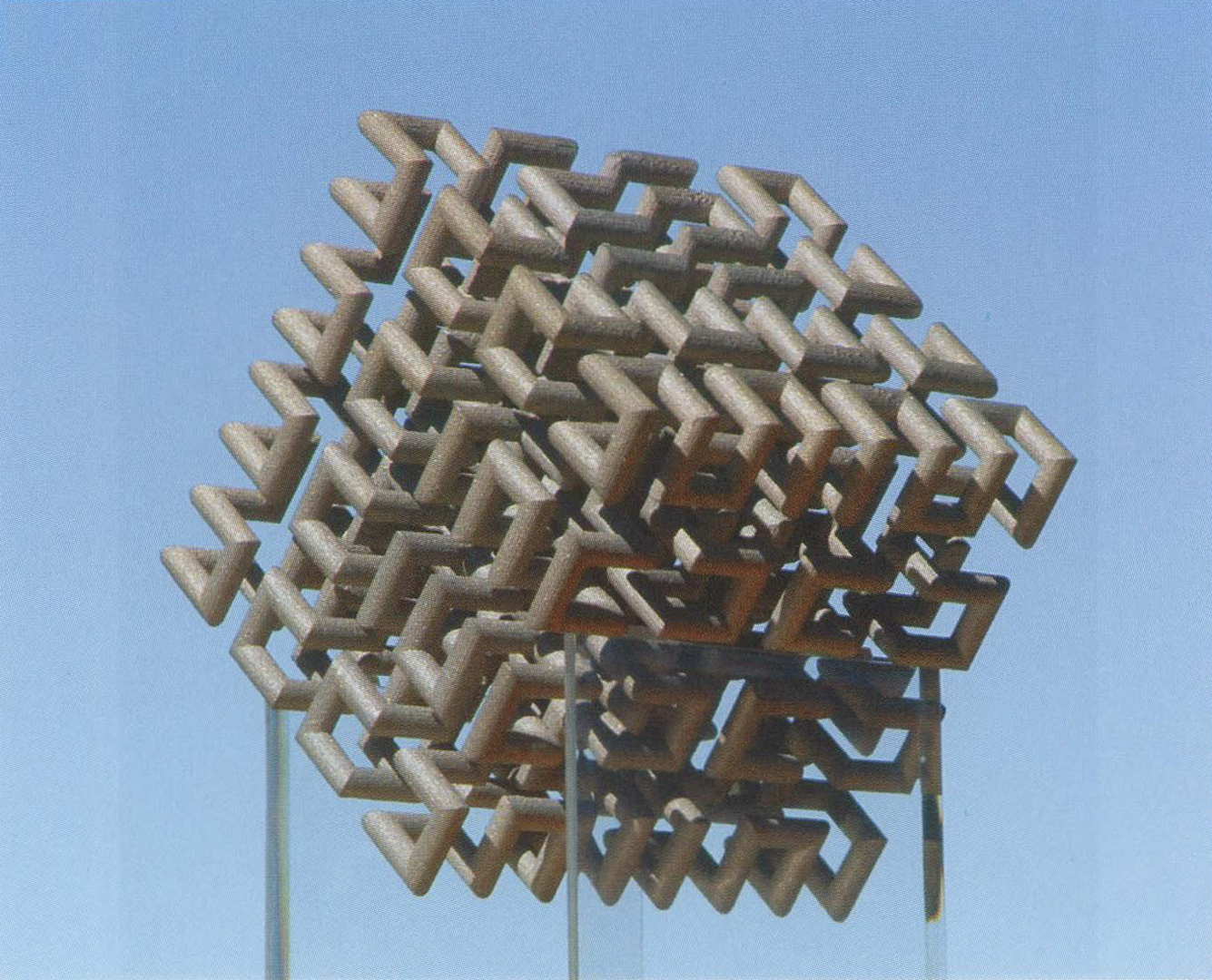Carlo Séquin: Hilbert Cube
Artist(s):
Title:
- Hilbert Cube
Exhibition:
Medium:
- Sculpture: stainless steel and bronze alloy
Size:
- 5" x 5" x 5"
Category:
Artist Statement:
Hilbert Cube emerged from the challenge of taking the famous two-dimensional Hilbert Curve and exploring what can be done with this pattern in three dimensions. The resulting intriguing “brain-like” structure is based on a recursive procedure that repeatedly splits the cube, and the resulting parts, into two equal, mirror-image parts. At each level, the two halves are only very loosely connected; at the highest level there are only two connectors – again reminiscent of the human brain.
The motivation behind Hilbert Cube and similar works lies in the drive to find procedural formulations that extract the inherent symmetries and constructive elegance that lie beneath the best sculptures by highly skilled artists, but which also can be found in many natural artifacts and even in the physical laws of our universe.
There were many challenges in realizing the initial vague concept. Many combinations of splitting, twisting, and assembly of the individual recursive modules had to be tried out to meet all mathematical and aesthetic requirements. This would not have been possible without the help of computer-aided tools. The speed with which many such variations can be explored provides great stimulation, and the computer thus becomes an amplifier for an artist’s creativity.
The virtual design space, unencumbered by physical limitations such as gravity, allows the artist to become a composer in the realm of pure geometry.
Technical Information:
Hilbert Cube emerges from a recursive procedure that starts with a simple path along the edges of a cube. Each corner in this structure is then replaced with a copy of this path, scaled down by a factor of two, and suitably connected to maintain the overall cyclic nature of the path. After three recursion steps, a structure emerges with a total of 512 L-shaped turns. Great care has been taken to ensure that no more than two consecutive Ls lie in the same plane.
The implementation challenge was to fabricate this sculpture in metal. Fortunately, a suitable rapid-prototyping process became available recently from ProMetal, a division of The Ex One Company. In this process a “green” part is first formed from stainless-steel powder and a selectively applied binder. This green part is then sintered, and the binder is drained out and replaced by liquid bronze. In this way, it is possible to make very complex parts under direct computer control with no need for molds or machining.





